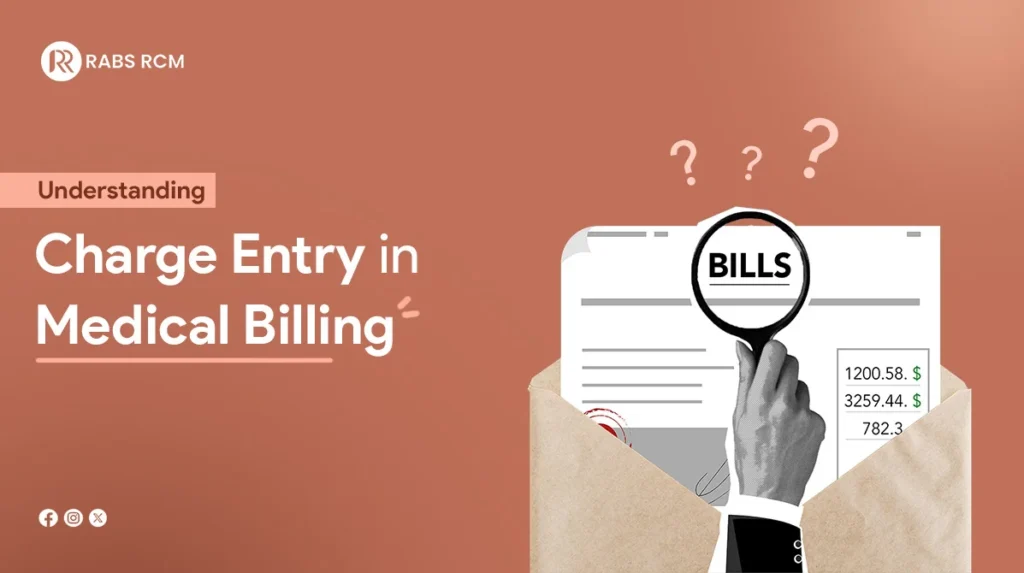
Understanding Charge Entry in Medical Billing
Introduction
In the intricate world of medical billing, charge entry plays a pivotal role in ensuring accurate reimbursement for healthcare services rendered. It is a critical step in which healthcare providers record and submit the charges for the services provided to patients. Understanding the nuances of charge entry is vital for medical billing professionals to streamline revenue cycle management effectively.
What is Charge Entry in Medical Billing?
Charge entry in medical billing refers to the process of accurately recording and entering the charges for medical services provided to patients into the billing system. It involves capturing essential details such as the type of service provided, the duration of service, relevant medical codes (CPT, ICD-10), patient demographics, and insurance information.
The Charge Entry Process
- Gathering Information: The process begins with collecting pertinent details related to the services rendered, including the type of procedures performed, the diagnosis, and patient insurance information.
- Verification: It is crucial to verify the accuracy of the information collected to minimize errors. This involves confirming patient demographics, and insurance coverage, and ensuring compliance with coding regulations.
- Coding: Assigning appropriate medical codes (Current Procedural Terminology – CPT, and International Classification of Diseases – ICD-10) is a crucial step in charge entry. Precise coding guarantees rightful reimbursement and adherence to regulatory standards, fostering financial integrity and compliance within the healthcare sector.
- Data Entry: Once all necessary information is verified and coded, it is entered into the billing system. This includes inputting charges for each service provided and associating them with the respective patient and insurance details.
- Review and Submission: Before final submission, a thorough review of the entered charges is conducted to identify any discrepancies or errors. Once validated, the charges are submitted to insurance companies for reimbursement.
Benefits of Efficient Charge Entry
- Maximized Revenue: Accurate and timely charge entry ensures that healthcare providers receive proper reimbursement for the services rendered, thereby maximizing revenue.
- Reduced Errors: By implementing efficient charge entry processes, the likelihood of errors such as underbilling or overbilling is minimized, leading to improved compliance and fewer claim denials.
- Streamlined Workflow: A well-organized charge entry system facilitates smooth workflow management, allowing medical billing professionals to process claims efficiently and reduce turnaround time.
- Enhanced Patient Satisfaction: Timely and accurate billing practices contribute to a positive patient experience by minimizing billing errors and ensuring transparent communication regarding healthcare costs.
Demo and Charge Entry in Medical Billing
Demonstrating the charge entry process through a demo can be highly beneficial for training purposes and ensuring consistency in billing practices within healthcare organizations. A demo typically involves simulating real-world scenarios to illustrate the various steps involved in charge entry, from gathering patient information to submitting claims.
During a demo, emphasis is placed on
- Proper documentation and data collection.
- Accurate coding and charge assignment.
- Verification of patient insurance details.
- Error identification and resolution.
- Submission of claims to insurance companies.
Charge Entry in Medical Billing Process
The charge entry process is an integral component of the broader medical billing workflow, which encompasses several interconnected stages, including patient registration, coding, claim submission, and payment posting.
Key stages in the charge entry process include:
- Data Collection: Gathering relevant information such as patient demographics, insurance details, and services provided.
- Coding: Assigning appropriate CPT and ICD-10 codes to accurately represent the services rendered and diagnoses.
- Data Entry: Entering the coded information into the billing system, along with corresponding charges and patient insurance information.
- Verification: Reviewing entered data for accuracy and compliance with coding and billing regulations.
- Submission: Transmitting claims to insurance companies or payers for reimbursement.
- Follow-up: Monitoring the status of submitted claims, resolving any issues or discrepancies, and ensuring timely payment.
Conclusion
Charge entry in medical billing is a fundamental process that significantly impacts the financial health and operational efficiency of healthcare providers. By adhering to best practices and leveraging technology solutions, medical billing professionals can streamline the charge entry process, minimize errors, and optimize revenue cycle management. A thorough understanding of charge entry is essential for ensuring compliance with regulatory requirements and maximizing reimbursement for healthcare services provided.

